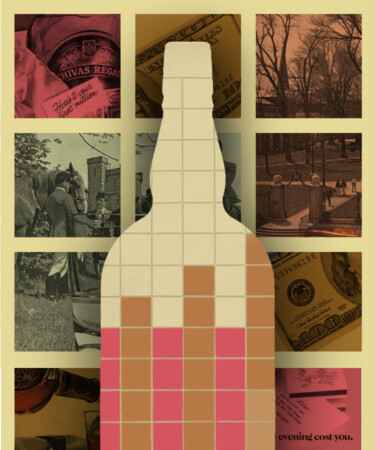Whether or not we realize it, we’ve likely all fallen victim to the fallacy that pricier products must be superior to their less expensive competitors. A psychological phenomenon sometimes referred to as the “Chivas Regal effect” causes shoppers to equate a higher price tag with greater value, regardless of the actual quality of the product. But how did Chivas Regal, a blended Scotch whisky, become the source of this enduring marketing term?
Chivas’s roots can be traced back to Aberdeen, Scotland in the early 1800s, when two brothers, James and John Chivas, entered into the grocery business selling liquor, wine, and other luxury items. Following the demand for smooth whisky, the pioneering duo opted to create their own expression, learning the complex art of blending aged whiskies. Eventually the Chivas Brothers’ clientele grew, and in 1843, the merchants received their most important request: a royal warrant to supply Queen Victoria with their Scotch. Despite this regal stamp of approval, it wasn’t until 1909 that Chivas Regal, the brand’s luxury blend, was introduced to the world.
Fast-forward to the late 1940s and a sluggish global economy following World War II; the once thriving Chivas Brothers brand was struggling. While the details are murky, it was during this era that some sources assert that the “Chivas Regal effect” was born. As Thrillist explains, the company doubled the cost of its Scotch, which resulted in a considerable increase in sales and popularity. More importantly, the whisky itself remained exactly the same — it was simply perceived as “better” because of the price increase.
However, the price jump was not necessarily the sole cause for the brand’s boost in sales. Canadian mega-company Seagram’s purchased Chivas Brothers in 1949 and pushed an impressive advertising campaign. Whether the conglomerate’s aggressive marketing precipitated Chivas Regal’s newfound popularity, or the price adjustment created the perception that the whisky had been elevated to a “luxury” product, one can only guess.
Adding to the confusion, it’s unclear as to when the phrase “Chivas Regal effect” entered the general lexicon. Though its origins remain difficult to pin down, there is little doubt that the anomaly still applies today. Strangely, the term has more recently been used to explain the corresponding relationship between a college’s increased tuition and its heightened reputation.
It’s enough to make you want to down a few glasses of Chivas Regal.
